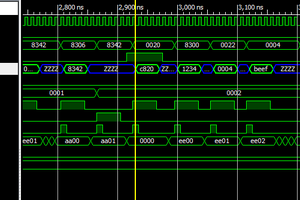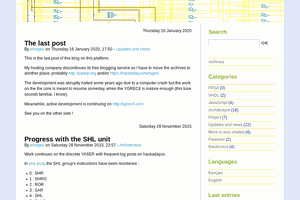For a good overview from "back then" (in French) : http://frog.isima.fr/copyleft/yann/index.html
Look at all the (still working ?) links and local copies !
- http://frog.isima.fr/copyleft/yann/index.html
- http://frog.isima.fr/copyleft/yann/brochure/f-cpu_desc_fr.html
- http://frog.isima.fr/copyleft/yann/parinux/conf_yg.html
- http://frog.isima.fr/copyleft/yann/19c3-presentation.pdf
- http://frog.isima.fr/copyleft/yann/17c3/conference17C3.html
F-CPU has now evolved and the new "cluster of globules" version is described here.
Logs:
1. Overview of the FC1 (F-cpu Core #1)
2. Operating System and Security
3. Instruction packing
4. Pairing and memory read/write
5. Register-Mapped Memory
6. Check-in, Check-out
7. Inter-globule communication
8. Decoupled Globules
9. What can you do with 64 bits wide pointers ?
10. Multicast memory regions
11. Celebration
12. F-CPU as a decent vector processor
13. FC1 : the memo
14. Tagged registers
15. Another cautionary tale... from Apple
16. Tagged Control Stack
17. Pointers and conditions
18. Access rights and capabilities
19. Exceptions
20. Read-as-Zero
21. Register spill
22. SRB : Smooth Register Backup (it was nice)
.
.
 Yann Guidon / YGDES
Yann Guidon / YGDES





 Erik Piehl
Erik Piehl

 aaron
aaron
Note for later...
The "LSB" flag (parity) should be complemented by a8, a16, a32 and a64 to check pointer alignment... it's just a NOR of the 1/2/3/4 LSB (respectively)